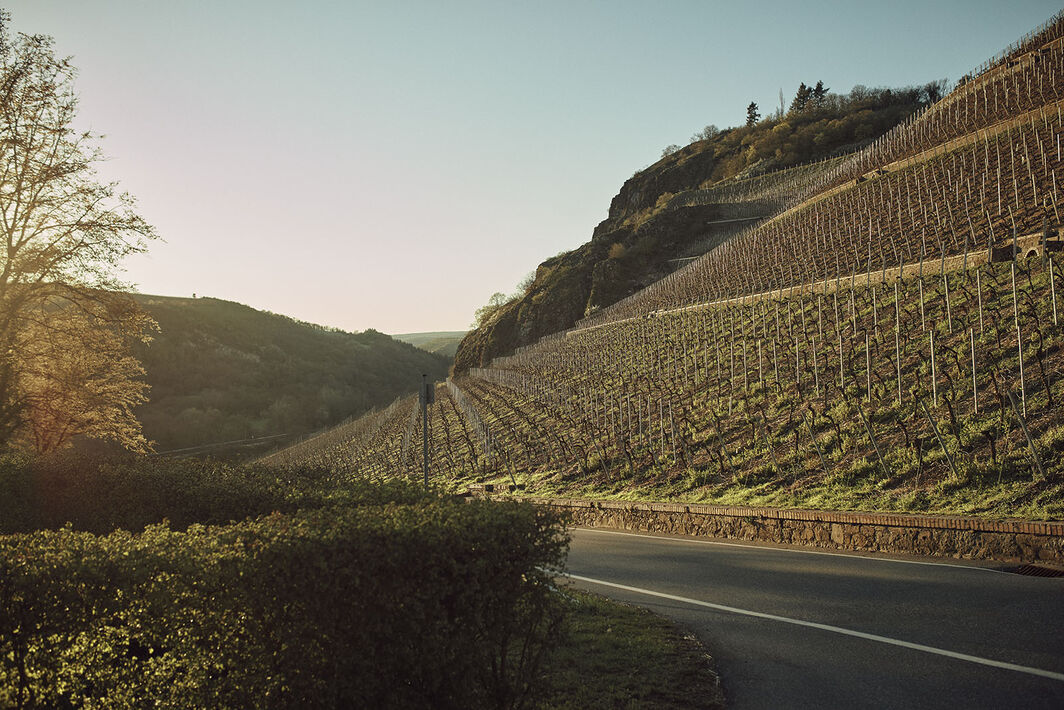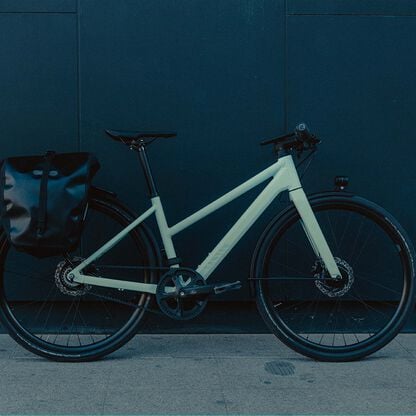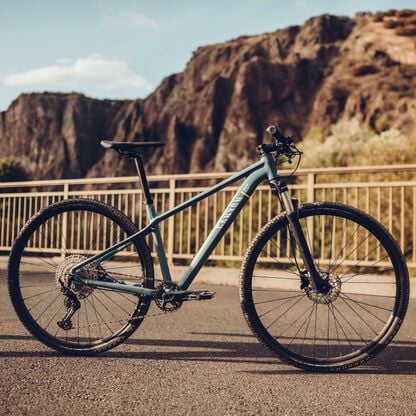Riding the Moselle Cycle Path
18 stages, three countries, one path: Moselle Cycle Path from Thionville to Koblenz


275 kilometres of culture in France, Luxembourg, Germany: The Moselle Cycle Path is separated from car traffic for long stretches, level and close to the river.

Exploring the Moselle wine-growing region by bike
The regional railway line between Koblenz and Trier is legendary: almost continuously, the line travels along the Moselle, following the meanders of the river amid the vineyards and steep red sandstone slopes through the Moselle valley. But there is also a cycle path running parallel to the Moselle. Mostly flat and close to the banks, it makes it possible to experience the different cultural landscapes between France, Luxembourg and Germany.
A well-developed cycle path for all types of bikes
If you like to cycle on the flat in a relaxed manner, letting the surrounding landscape take its effect on you, the Moselle Cycle Path is a pleasure. However, you will have to negotiate one or two village crossings without a cycle path, as well as short stretches of country road.
In France, in particular, you will come across occasional car traffic. Make sure that your perfectly tuned road bike, mountain bike or gravel bike is roadworthy. With electric assistance, you can ride even more comfortably.
Important to know: The cycle path sometimes runs over unpaved roads for short sections in the nature reserves. Your tyres should be able to cope with this. If you want to cycle the entire Moselle Cycle Path, here at Canyon, we have the right touring bike for you. However, the well-maintained cycle paths between Trier and Koblenz are no problem with a city bike.

A flexible choice of route thanks to alternative paths on both sides of the Moselle
The Moselle Cycle Path repeatedly connects the two banks of the Moselle via bridges. You can decide for yourself on which side of the river you use the cycle path.
Important to know: Between Thionville and Metz, you can cycle along the Moselle on cycle paths. However, if you want to cycle through the Vosges and start at the source of the Moselle, you will mainly be on roads with car traffic. There are only sections of cycle paths here. That's why guidebooks and the internet often only cover the cycle path between Thionville and Koblenz, and sometimes even only the German section between Perl and Koblenz.
It is one of the most popular long-distance cycle routes in Europe - but how long is it?
The Moselle Cycle Route is part of the international Route Velo Tour Moselle. However, the German part of the cycle route starts in Perl. Some cycling guides only cover the Trier-Koblenz section, which is only the last 198 kilometres of the cycle route. So, before you buy a cycling guide or download the corresponding apps on your smartphone, take a close look.

Perl or Metz: Where do you start?
The Rhineland-Palatinate tour planner gives the Moselle Cycle Route as being the total distance from Perl to Koblenz and estimates it at 248 kilometres. The route is described as easy and technically undemanding and is said to be easily manageable in 17 hours.
Radweg-Reisen, on the other hand, estimates 310 kilometres and has the Moselle Cycle Route starting in Metz. This makes sense insofar as the route between Metz and Koblenz is more or less continuously signposted with the green and white Moselle logo.
From the Vosges to Metz, the sign is not so common. The division of the route into individual sections is quite demanding; families with children and/or dogs and occasional cyclists will certainly not manage the five sections of 54 to 77 kilometres each. However, if you are a trained rider, you should be able to do it without any problems.
Remember: more breaks and stops also mean that you better get to know the unique culture to be found along the Moselle. By the way, this cycle route is even more comfortable on an E-Bike.
Komoot calculates 18 stages from the Vosges to the banks of the Rhine
If you already use the app, you'll know: Komoot is aimed at the most athletic cyclists. Here, the complete cycle route from the source of the Moselle in the Vosges to the mouth of the river in Koblenz is given as 585 kilometres. You will definitely not complete the tour in the estimated six to twelve days if you have children with you or are less athletic.
But Komoot also assumes a generous stage division. 18 stages in six days would mean that you complete three stages every day. With an E-Mountain bike this is certainly doable - with a city bike, it will be exhausting. Incidentally, the German part of the cycle path is covered by ten stages; the longest stage is just 42 kilometres long, most of them less than 30 kilometres. With one stage a day, you'll really get to see a lot here and have plenty of time and energy for detours to the great castles and other sights in the area.

What should you definitely see along the Moselle?
Every guidebook answers this question a little differently. We limit ourselves to the absolute highlights and assume that you will discover the other sights anyway. After all, castles and palaces, churches and wine taverns, Roman thermal baths and temple buildings are not easy to miss from a cycle route!
- Épinal: Capital of the Vosges Département, attracts visitors with a beautiful old town. In the local museum, you will find a collection of the oldest comic strips.
- Bainville-aux-Miroirs: The start of La Moselle Sauvage nature reserve. Rare birds and beavers are as much at home here as splendidly flowering plants.
- Nancy: Bistros, restaurants, the Place Stanislas, winding streets and historic architecture - that's France!
- Jouy-aux-Arches: You can't miss this historic aqueduct just outside Metz. In Metz, you will discover other buildings from the Roman era. The city is a living architectural history, with more than just the Saint-Étienne Cathedral to be visited.
- Nittel: The small, almost inconspicuous wine village produces a fabulous Elbling. Apart from that, it lies at the foot of impressive dolomite and limestone cliffs.
- Konz: Here, you will find not only the remains of a Roman imperial villa but also the Roscheider Hof open-air museum.
- Trier: UNESCO World Heritage Sites, four Roman thermal baths, an amphitheatre, a Roman basilica, a 2000-year-old city centre... need we say more? Plan two nights or more here.
- Piesport: Here, you will find the largest restored wine press from the Roman period north of the Alps.
- Bernkastel-Kues: The medieval town is dominated by Landshut Castle. In the Mosel Wine Museum, you can learn about the history of Mosel wine.
- Traben-Trarbach: This Art Nouveau town offers you a chance for a short visit to the Grevenburg castle ruins and a guided tour through the town's substructure. There is also a Buddha museum here.
- Bullay: Germany's first double-decker bridge is designed for railways above and road traffic below.
- Moselkern: Eltz Castle is worth a detour.
- Kobern-Gondorf: A medieval marketplace awaits you here. Looking for the oldest half-timbered building in Germany? It's also here.
- Koblenz: More winding alleys and museums, wonderful gastronomy, monasteries, and castles await you in Koblenz.

And the Moselle loop?
Wiped out! We left out the Moselschleife from our sightseeing list. It is located at the wine and holiday resort of Bremm. However, you can't see the loop very well from the Moselle Cycle Path itself; the best view is from the Bremmer Calmont.
This is the steepest vineyard site in Europe (with a more than 60 per cent gradient), and at 378 metres, it is really high. The cycle path disappears down in the valley, where the Moselle loop wraps tightly around vineyards and leads the beautiful river almost completely around. It looks like an island. If you really want to venture on the Calmont-Höhenweg, we recommend an off-road bike. You can find mountain bikes and E-Mountain bikes in our shop!
Discover our Hybrid Bikes
Did this article help?
Thank you for your feedback








